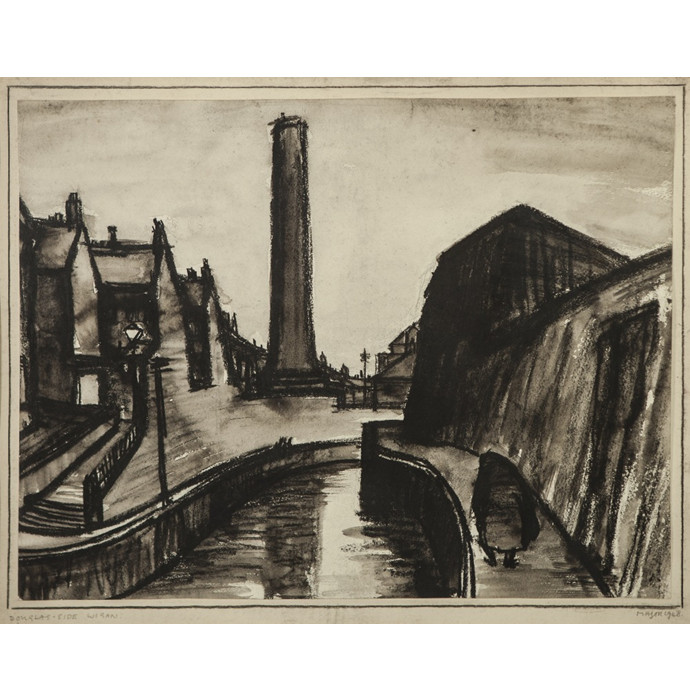Major, Theodore: Douglas-Side, Wigan – SOLD
£1,750.00
A confident, bold and deeply atmospheric charcoal drawing incorporating a number of Theodore Major’s motifs including the lone figure, telegraph poles and a lit street gas lamp. This framed work may well have been intended to be preliminary to an oil painting but is complete in its own right. The Douglas is at this point a ‘canalised’ river running through Wigan.
Theodore Major is a much collected artist whose artistic vision, whilst much different, is as significant as that of L.S.Lowry in capturing the gritty reality of life in northern towns in the early post-war years.
More images can be provided on request.
Artist: Major, Theodore (1908-1999), signed
Title and date: Douglas-Side, Wigan, 1948
Size: 35.0 x 45.5 cms.
Out of stock
Description
Artist description:
Theodore Major was born and lived in Wigan, Lancashire and had two brothers and four sisters, his mother and father both worked in a cotton mill. He left school at 13 and worked in a tailor’s shop but poor health eventually led to his losing his job. Although largely self-taught, he attended the local art school between 1927 and 1932, and taught there between 1930 and 1950.
He was president of the Wigan Art Club which he founded in 1952 and was a member of the Manchester Group along with L.S.Lowry with whom he shared exhibitions. He also exhibited in Nottingham and Bolton and had Arts Council-sponsored solo exhibitions at Carlisle and Blackburn Art Galleries and in 1984 at Salford Art Gallery which holds his work. Major retrospectives of his work were held at Salford Museum and Art Gallery in 2003 and Oldham Gallery in 2008.
Major was opposed to materialism, the commercial gallery system and the sale of his pictures to rich collectors. He retained about 3,000 of his pictures which he said were painted for ordinary people, not for money. The art critic John Berger called Major’s pictures “among the best English paintings of our time”. He painted in a wide range of styles in his own words “to disturb and extend consciousness in the mind of the viewer”.
His paintings are now being discovered and admired by art collectors, particularly his powerful industrial and urban scenes such as this one.

